More information
Five U-M faculty projects that demonstrate fresh approaches to advance student learning will be recognized May 7, as winners of the fourth annual Provost’s Teaching Innovation Prize (TIP). The award is sponsored by the Office of the Provost, the Center for Research on Learning and Teaching (CRLT), and the U-M Library.
“The five projects demonstrate creative ways to engage and motivate students to learn,” Provost Phil Hanlon says. “It’s inspiring to see the range of innovative teaching projects that faculty are pursuing across the university.”
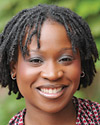
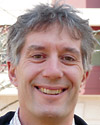

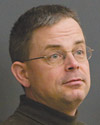
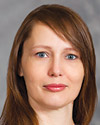
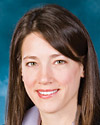
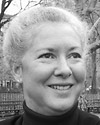
Eniola-Adefeso
Evrard
Gerdes
McKay
Millunchick
Sienko
Tinkle
The U-M community is invited to a 9 a.m. poster fair and breakfast buffet in the Rackham Assembly Hall before TIP awards are presented at 10 a.m. in the Rackham Amphitheatre on the opening day of Enriching Scholarship 2012. In addition to TIP posters, the fair will feature projects by teams who received Investigating Student Learning grants from CRLT and the Office of the Provost.
A faculty committee selected the winning TIP projects from 77 nominated by students, staff and faculty peers. The winners will receive $5,000.
The winning projects are:
• Experiencing “True Engineering” Earlier: Learning Concepts by Teaching to High School Students — Omolola Eniola-Adefeso, assistant professor of chemical engineering and assistant professor of biomedical engineering, College of Engineering (CoE).
This project invites 10th-graders to serve as an audience for science fair-style presentations by undergraduate engineering teams. The experience motivates undergraduates to learn concepts more thoroughly as they figure out how to teach them. The challenge of creatively linking real-world applications to chemical engineering principles also supports retention in science, technology, engineering and mathematics (STEM) disciplines by increasing undergraduates’ interest and excitement.
The emphasis on collaboration and teamwork over individual competition improves the climate of the learning environment, particularly for women and members of historically under-represented groups. Furthermore, when undergraduates design high quality, inexpensive demonstrations that can be used by high school teachers, science learning is improved and students are better prepared for college. Getting kids excited about what chemical engineers are able to achieve, from making candy to purifying water, helps attract diverse STEM students.
“We demonstrated that Styrofoam served as a better insulator than aluminum against a cryogenic solution,” one undergraduate wrote. “The high school students were in awe at this basic scientific principle at work.”
• Better Than Expected: Using Tailored Communication to Optimize Learning — Tim McKay, Arthur F. Thurnau Professor, professor of physics, astronomy and director of the Honors Program, LSA; David Gerdes, Arthur F. Thurnau Professor and professor of physics, LSA; and August Evrard, Arthur F. Thurnau Professor, professor of physics and astronomy and associate chair, Department of Physics, LSA.
The project E2Coach presents students a personalized website that delivers detailed feedback and encouragement in introductory physics courses. Based on survey answers elicited as the course begins, advice is tailored to each student’s background, current standing, and progress over the course of the semester. The advice also is sensitive to the students’ ambitions and identities.
A final grade is predicted at the outset for every student, based on a 2008 learning analytics project with data on nearly 50,000 U-M students. However, the predicted grade can be exceeded when students change their study strategies in response to the tailored advice, thereby achieving better-than-predicted performance.
“One of the most helpful things I got from E2Coach was that you should work and rework problems and make sure you really understand,” a student wrote.
• High Return on Investment: Addressing Diverse Student Needs in Large Lectures Through Screencasting — Joanna Mirecki Millunchick, professor of materials science and engineering, CoE.
This project shows that screencasts have the potential to level the playing field in courses that draw students with a wide range of background knowledge. Students from different engineering majors have comparable academic indicators upon entering MSE 220, a large introductory materials science and engineering course. Yet, their prior exposure to the course material widely varies. Statistical analysis reveals that students perceive screencasts to be helpful as a study supplement.
Overall, final grades show students’ use of screencasts is positively and significantly correlated with their course performance. The most substantial gains were made by students least familiar with course material. Specifically, industrial operations engineering students enter with the least preparation in materials science, but they do not receive the lowest grades in the course, thanks to their comparatively heavy use of the screencasts.
“The animations and photos really help illustrate key concepts,” a student wrote.
• Co-Creative, Immersion-Based Design for Global Health — Kathleen Sienko, assistant professor of mechanical engineering and of biomedical engineering, CoE.
Challenging undergraduates to design medical equipment for use in limited-resource settings requires long-range vision and support. The high quality of the resulting design projects has led to conference presentations, an article in the Journal of Medical Devices, patent applications and a spin-off social venture.
Initially, U-M’s Global Intercultural Experience for Undergraduates program provided a framework for developing community partnerships in Ghana, where undergraduates spent four summer weeks in 2008 and again in 2009 observing obstetric and gynecological practices in multiple settings. These teams proved the concept by generating design topics deemed important by the Ghanaian Health System and suitable for U-M senior design coursework. In 2011 the program was expanded in Africa, and a new program was piloted in China with industry support.
“While other students were given previously identified design challenges with designated user requirements, the ability to go on-site and personally identify a problem allowed me to see the importance of designing for the user,” a student wrote.
• Teaching Smarter, Not Harder: Improving Students’ Close Reading Skills Through Interactivity — Theresa Tinkle, Arthur F. Thurnau Professor, professor of English language and literature, and academic program director, Department of English Language and Literature, LSA.
Among innovations that stand out in this re-invention of English 350, a survey of literature before 1660: The instructional team prioritized undergraduates’ development of close reading skills, replacing an earlier focus on highly specialized knowledge of cultural contexts. Students spent much more time performing close readings themselves, rather than merely observing while an instructor modeled close reading.
Making these changes in a large-lecture setting required the incorporation of technologies and assessments more commonly used outside the humanities. CTools quizzes and forum postings, along with i>clicker questions “massively increased student engagement with the material without requiring a commensurate increase in grading time,” wrote the department chair.
One student wrote that in a hall “filled with more than 50 students, every single one showed complete engagement with material that was truly difficult, but was made amazingly accessible.”

